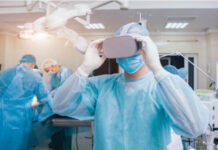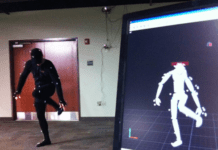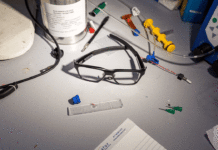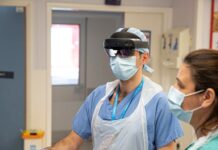
Augmented reality apps along with devices became popular when it formed part of the video gaming industry but these tools are no longer just used for catching Pokémon. Technology has found its way into other sectors and enterprises, including health care. Earlier this month surgeons from the Texas Health Science Center in Houston and Memorial Hermann-Texas Medical Center became the first in the country to conduct a minimally invasive sinus surgery by using AR technology. The benefits of AR technology in medicine have been discussed at length but this is one of the few times it has been seen in action.
Dr. Martin J. Citardi, chair of the Department of Otorhinolaryngology – Head and Neck Surgery at McGovern Medical School at UTHealth, explained how AR assisted the operation. He stated that AR uses 3D mapping. Imagery which enhances the awareness of complex anatomy so that surgical procedures can be done precisely. He further said that the addition of AR to the operating table serves a medical GPS and offers patients the benefits of minor surgery with lower risks and better outcomes. The AR device allows doctors to have a more accurate vantage point during surgery.
Citardi and his team used Stryker’s Scopis Target Guided Surgery technology during the planning of the pathway and to view critical structures in preoperative medical scans. The mapping was overlaid onto a surgeon’s endoscopic views of the surgical area. The idea is that the surgeons will then follow the AR map to minimize the potential of making mistakes. Citardi also mentioned that the system also allows for the recording of the surgery and the planning stages. This content is very useful when training medical students or surgeons in the area of endoscopic sinus surgery.

The surgery was called a revision image-guided functional endoscopic sinus surgery for recurrent chronic rhinosinusitis. The patient that the surgeons operated on also had a fibro-osseous lesion that blocked the drainage from the left frontal sinus. Citardi said that even though it was quite a complicated case, the use of the AR technology helped them to plan a pathway to drain the sinus to avoid the need for further extensive surgery. It has helped lay the foundation for other hospitals to adopt AR technology in their operating theatres and it might just inspire AR developers to develop apps or devices specifically for the health care sector.
The technology used in the surgery, Scopsis, was founded in 2010. It focuses on endoscopic AR. Last year Scopsis announced the release of a new tool that will give surgeons enhanced vision when performing spinal surgery. The company pairs its technology with Microsoft’s HoloLens. Several other developers are also using HoloLens as a tool to help develop AR technologies during surgery. More recently, surgeons at St Mary’s Hospital in London used the HoloLens to overlay images of CT scans whilst operating on a patient’s lower limb.
There are already companies like Augmedics that are developing their range of smart glasses suited for the medical profession. It is interesting to see the competition between them and the tech giants like Microsoft.
March 14, 2018























